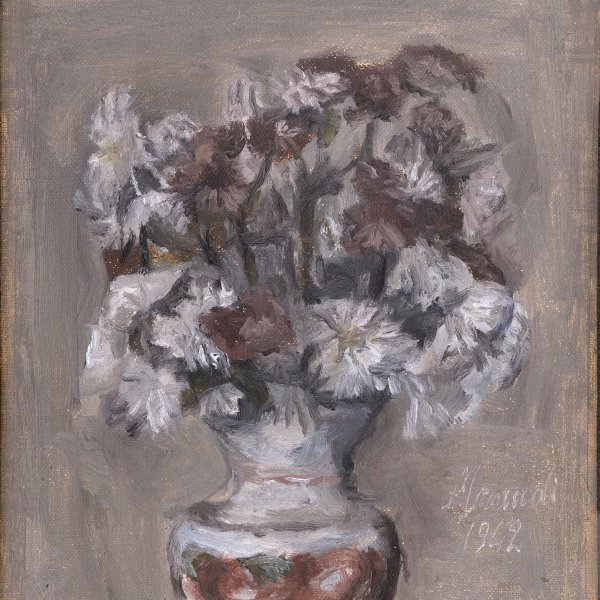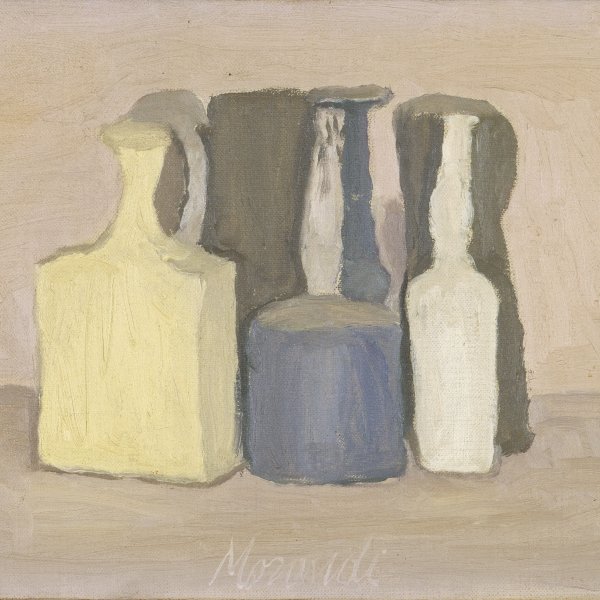Giorgio Morandi
Giorgio Morandi studied at the Accademia di Belle Arti in Bologna from 1907 to 1913. During a visit to Florence in 1910, he was attracted to the works of Giotto, Masaccio and Paolo Uccello. His approach to contemporary art took place primarily through art journals, and he showed an early interest in Cézanne's oeuvre.
Towards 1913-1914 Morandi was introduced to futurism by Osvaldo Licini, a fellow student from the Accademia, and Giacomo Vespignani. A year later, together with Licini, Vespignani, Severo Pozzati and Mario Bacchelli, he showed his works in the controversial exhibition held in the Hotel Baglioni in Bologna. That same year, he took part in the Prima Esposizione Libera Futurista, held in the Galleria Sprovieri in Rome. However, his futurism was relative, as he showed at that time a preference for the work of Cézanne, Picasso and Braque, which enabled him to participate in the second exhibition of the Roman Secession (1914), from which the Futurists were excluded. Morandi was also offered a teaching post at the municipal drawing school in Bologna, a post he held until 1929.
After falling seriously ill during World War I, Morandi went back to his artwork in 1918. During the following years he often met up with Giorgio de Chirico, Carlo Carrà and Ardengo Soffici, contributing to metaphysical painting with his own formal rigour. At the end of 1919 he signed a contract with Mario Broglio, the publisher of the review Valori Plastici, thanks to whom he took part in exhibitions with other members of Valori Plastici in Berlin, Dresden, Hanover and Munich, in 1921, and in the Fiorentina Primaverile in 1922. During those years he abandoned vanguard innovations in order to concentrate on his own poeticised vision of everyday objects, paying special attention to the treatment of light and to spatial intervals, as became characteristic in his mature work. In 1926 and 1929 he took part in the first and second Mostra del Novecento Italiano, and around the same time he was in close touch with the intellectual group linked to the review Il Selvaggio, directed by Mino Maccari. In 1930 Morandi became professor of engraving techniques at the Accademia di Belle Arti in Bologna. Two years later, Soffici dedicated to him a monographic issue of the review L'Italiano, which earned him international fame. At the end of the 1920s and during the 1930s Morandi took part in important competitions, such as
the Venice Biennale (1928, 1930 and 1934), the Carnegie Prize in Pittsburgh (1929, 1933 and 1936) and the Rome Quadriennale (1931, 1935 and, with a special room dedicated to him and the obtainment of the Second Prize, in 1939).
Morandi spent part of World War II in the town of Grizzana. In 1945 Roberto Longhi organised an individual exhibition of his oeuvre in the Galleria del Fiore in Florence. Three years later, in 1948, he received the First Prize for Painting at the Venice Biennale and in 1957 the Grand Prix at the Sao Paulo Biennale. In 1956 Morandi left his post at the Accademia di Belle Arti in Bologna, but he continued to paint until his death on 18 June 1964.
Juan Á. López-Manzanares






